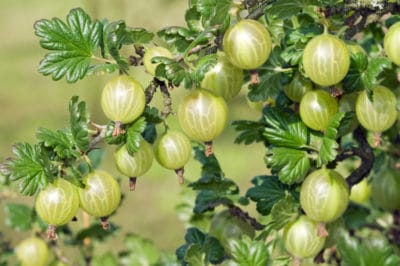Organic mulching and fertilizing go hand in hand
Gooseberries thrive excellently in nutrient-rich soil. Nevertheless, during the vegetation period there is occasional demand for nutrients, because the shallow roots have quickly depleted the available reserves. Since mineral-chemical preparations can no longer pass through the garden door of the environmentally and health-conscious hobby gardener, organic fertilizers dominate. That’s how you do it right:
- in early spring, rake a portion of compost with horn shavings into the soil surface
- alternatively fertilise with rotten manure, algae or primary rock meal
- then mulch with comfrey leaves, fern or nettles afterwards
- fertilise organically once again after flowering
- dilute nettle manure every 2 weeks during the entire growth phase
- fertilise one last time immediately after harvest
The mulch layer performs several tasks on the gooseberries at the same time. It keeps the soil moist for longer, releases nutrients and suppresses weeds. This has the advantage that it is rarely possible to rake. The flat roots are less exposed to the risk of damage.
A sensible alternative to compost
A garden does not always have enough space for a compost heap. This does not mean that you now have to do without organic fertilization of your gooseberries. There is a space-saving alternative called worm compost. In a close community of compost worms and other microorganisms, kitchen waste is composted according to a clever system. The special worm box is designed that way:
- the floor below serves as habitat for the compost worms
- the following floor delivers the mature worm compost
- on the lower floor there is a collection tank for worm tea, an organic liquid fertilizer
Such a worm farm can be built by anyone with a little manual skill. If properly managed, there is always sufficient organic fertiliser available for gooseberries and other crops.
Tips & Tricks
Not in the mood for scratched hands after the gooseberry harvest? Then cultivate the sort ‘Larell’, because here the thorns are missing. The deep red fruits are sugar-sweet and particularly burst-resistant. Due to its medium-strong growth, it also thrives excellently in the tub on the balcony.
GTH
